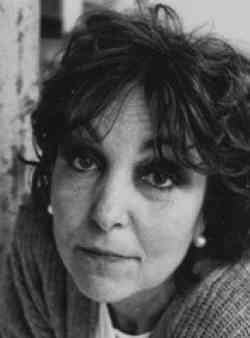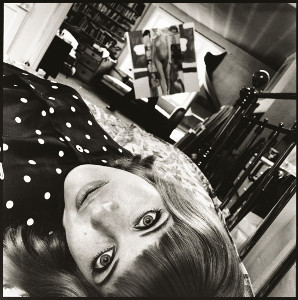Related Research Articles

Dame Maria Paula Figueiroa Rego was a Portuguese-British visual artist known particularly for her paintings and prints based on storybooks. Rego's style evolved from abstract towards representational, and she favoured pastels over oils for much of her career. Her work often reflects feminism, coloured by folk-themes from her native Portugal.

Pauline Boty was a British painter and co-founder of the 1960s' British Pop art movement of which she was the only acknowledged female member. Boty's paintings and collages often demonstrate a joy in self-assured femininity and female sexuality, as well as criticism of the "man's world" in which she lived. Her rebellious art, combined with her free-spirited lifestyle, has made Boty a herald of 1970s' feminism.
Bernard Cohen is a British painter. He is regarded as one of the leading British abstract artists of his time.
John Keith Vaughan, was a British painter. His work is held in the collections of the Government Art Collection, National Galleries Scotland, National Portrait Gallery, Tate and Victoria and Albert Museum in the UK.
Bryan Herbert Wynter was one of the St. Ives group of British painters. His work was mainly abstract, drawing upon nature for inspiration.
Eileen Cooper is a British artist, known primarily as a painter and printmaker.
Chantal Joffe is an American-born English artist based in London. Her often large-scale paintings generally depict women and children. In 2006, she received the prestigious Charles Wollaston Award from the Royal Academy.
Dame Ethel Walker was a Scottish painter of portraits, flower-pieces, sea-pieces and decorative compositions. From 1936, Walker was a member of The London Group. Her work displays the influence of Impressionism, Puvis de Chavannes, Gauguin and Asian art. Walker achieved considerable success throughout her career, becoming the first female member elected to the New English Art Club in 1900. Walker's works were exhibited widely during her lifetime, at the Royal Academy, the Royal Society of Arts and at the Lefevre Gallery. She represented Britain at the Venice Biennale four times, in 1922, 1924, 1928 and 1930. Although Walker proclaimed that 'there is no such thing as a woman artist. There are only two kinds of artist — bad and good', she was elected Honorary President of the Women's International Art Club in 1932. Soon after her death, she was the subject of a major retrospective at the Tate in 1951 alongside Gwen John and Frances Hodgkins. Walker is now acknowledged as a lesbian artist, a fact which critics have noted is boldly apparent in her preference for women sitters and female nudes. It has been suggested that Walker was one of the earliest lesbian artists to explore her sexuality openly in her works. While Walker was contemporarily regarded as one of the foremost British women artists, her influence diminished after her death, perhaps due in part to her celebration of female sexuality. Made a Dame Commander of the Order of the British Empire in 1943, Walker was one of only four women to receive the honour as of 2010.

Mary Fedden, was a British artist.
Lisa Milroy is an Anglo-Canadian artist known for her still life paintings of everyday objects. In the 1980s Milroy’s paintings featured ordinary objects depicted against an off-white background. Subsequently her imagery expanded, which led to a number of different series including landscapes, buildings and portraits. As her approaches to still life diversified, so did her manner of painting, giving rise to a range of stylistic innovations. Throughout her practice, Milroy has been fascinated by the relation between stillness and movement, and the nature of making and looking at painting.
Sir Lawrence Burnett Gowing was an English artist, writer, curator and teacher. Initially recognised as a portrait and landscape painter, he quickly rose to prominence as an art educator, writer, and eventually, curator and museum trustee. He was described as a prominent member of the "English Establishment". As a student of art history he was largely self-taught.

Sarah Cecilia Harrison (1863–1941) was an Irish artist and the first woman to serve on Dublin City Council.
Victor Arthur James Willing was a British painter, noted for his original nude studies. He was a friend and colleague of many notable artists, including Elisabeth Frink, Michael Andrews and Francis Bacon. He was married to Portuguese feminist artist Paula Rego.
Celia Paul is an Indian-born British painter. Paul's mainly known for her impressionistic work, which she developed during her education at the Slade School of Fine Art.
Rupert Norman Shephard was an English painter, illustrator and art teacher.
Leonard William Joseph McComb was a Scottish artist. He described his work as visual abstractions after nature. He was very interested in the detail in nature and declared that everything he drew or painted, whether a portrait head, flower, landscape, still life, or breaking sea wave, was, for him, a portrait.
Robin Craig Guthrie, was a British artist. He painted portraits, landscapes and murals and was also a draughtsman and book illustrator.
Karin Margareta Jonzen, née Löwenadler, was a British figure sculptor whose works, in bronze, terracotta and stone, were commissioned by a number of public bodies in Britain and abroad.
Jean Mary Spencer was a British artist known for her abstract paintings and relief sculptures.
Estelle Thompson is a British abstract painter who lives and works in London and Barbados.
References
- ↑ "Search Results for England202620wales20births201837-2006".
- ↑ "MS MARIE ELISABETH CHICHESTER RIDEAL director information. Free director information. Director id 904928151".
- 1 2 "Iris Profile". University College London. Retrieved 15 June 2018.
- ↑ "Photobooth.net | Art and the Photobooth : Liz Rideal".
- ↑ Johnson, Ken (11 August 2000). "ART IN REVIEW; Liz Rideal". The New York Times. Retrieved 13 June 2018.
- 1 2 "- Biography - Gallery 339 – Fine Art Photography – Philadelphia". Archived from the original on 11 July 2011. Retrieved 3 February 2010.
- 1 2 3 "Academics". The Exeter Summer Programme. Retrieved 15 June 2018.